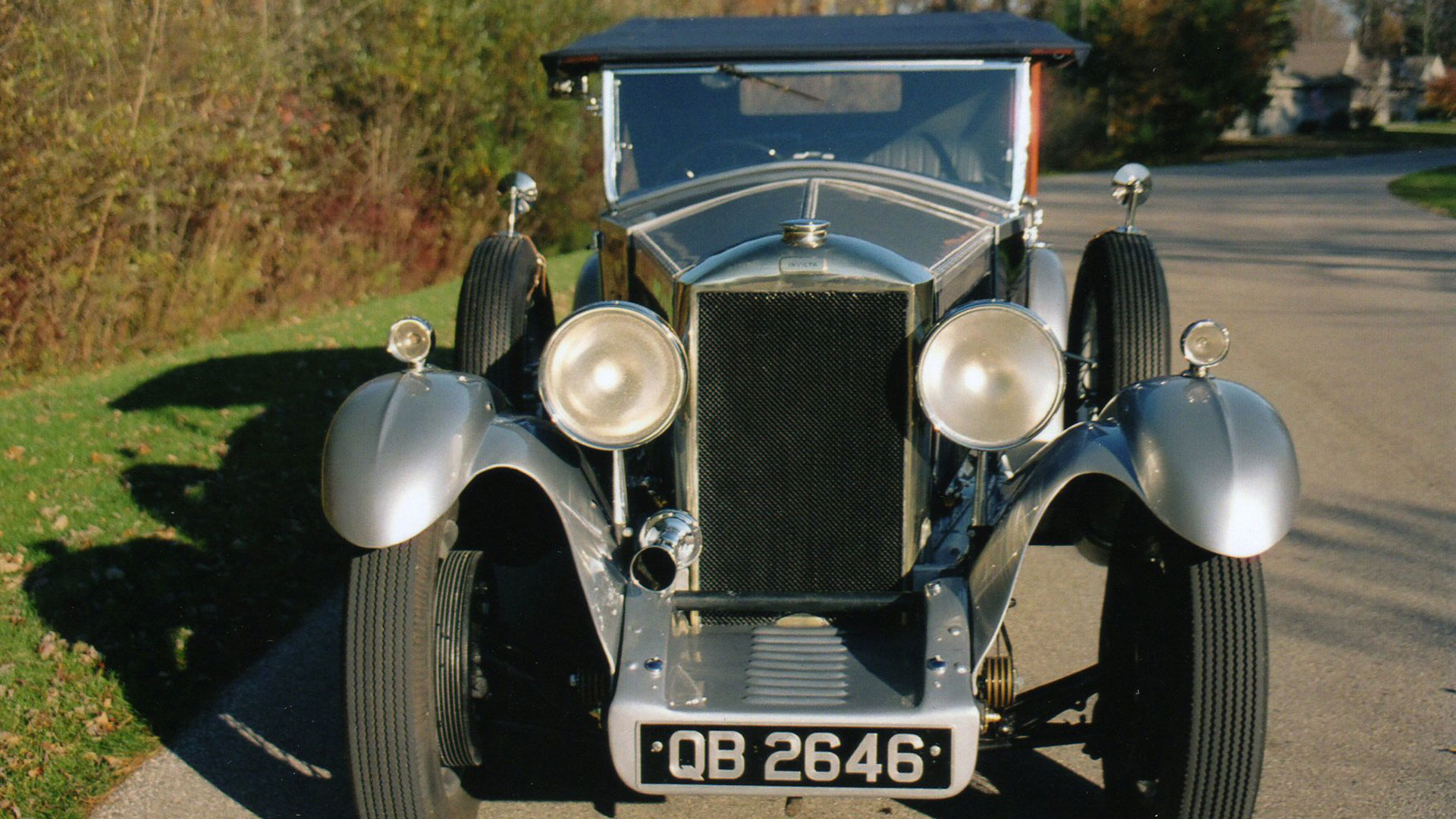Invicta
NLC and A Type
Invicta
NLC and A Type
The NLC cars were introduced for 1929 and were generally similar to the earlier models with the same Meadows 4 ½ litre engine and type 8A gearbox, but were much more substantial in all respects.
The chassis frame was heavier at 6 inches by 2 inches, with wider springs and the axles much heavier, the rear axle was ENV with double taper roller bearings and ratios of 2.9, 3.6, 3.9 or 4.5
Wheelbase options were 10 feet, and 10 feet 6 inches with chassis weights ranging from 21cwt to 23cwt approx. Track was wider at 4 feet 8 inches and larger 14 inch diameter brakes were fitted together with 6.00 x 19 tyres.
The bulkhead was a more substantial casting carrying a 2 gallon petrol reserve and a 1 gallon oil reserve. The guarantee had by now been reduced to 12 months.
The Gauntlet for May 1938 says 53 were made.
In 1930, the repercussions of the Wall Street Crash called for price reductions and the A Type was introduced as a less expensive version of the NLC.
The full width dashboard of the latter with its lovely AT instruments was replaced with a more utilitarian version with Smiths instruments on a black centre panel. Bronze castings were replaced with cast iron, the solid nickel-silver radiator was replaced by a brass shell and other economies were made where possible.
The Meadows records indicate that about 320 4 ½ litre engines were supplied to Invicta and Beverley-Barnes who assembled the later cars (allowing for the 75 S types and 50 or so NLC cars plus a few late 4 ½ litre LC cars, it seems possible that nearly 200 A types were made. If so then the survival rate is sadly rather low)
ENGINE
Supplied by Henry Meadows of Wolverhampton with six cylinders of 120.64 mm stroke and a bore of 88.5mm, giving a capacity of 4,467cc, in a single iron block casting mounted on an aluminium crankcase supporting a forged crankshaft on four white-metal bearings. Aluminium pistons were carried on H section forged steel connecting rods, with white-metal bearings.
The camshaft, carried in the crankcase, was driven from the nose of the crankshaft by an inverted tooth chain and operated the overhead valves by pushrods. This chain also drove the water pump and magneto whilst the dynamo mounted on the nearside was driven by a similar chain, both being adjustable. The cast iron twin plug cylinder head was of cross flow design with the valves operated by adjustable rockers under an aluminium cover.
Cooling by large centrifugal pump, and extremely efficient honeycomb radiator.
CARBURETTORS
A choice of twin Solex or SU instruments was offered, in each case with a separate starting device. The SU carburettors were 1 5/8 inch.
Fuel was supplied by a bulkhead-mounted Autovac drawing from a rear-mounted 17 gallon tank. A separate reserve tank for fuel and oil was carried on the bulkhead.
CLUTCH
Meadows single plate clutch with steel-driven plate and friction material riveted to the flywheel and pressure-plate. The design incorporated an adjustable clutch stop.
GEARBOX
Meadows type 8A in unit with the engine with right hand gear change. Four forward speeds and one reverse.
REAR AXLE
Banjo type enclosing special spiral cut bevels and very large diameter half-shafts for strength. Ratios 2.9, 3.6, 3.9 or 4.5
FRONT AXLE
Steel H section of exceptionally strong and heavy construction.
BRAKES
Rod-operated on all four wheels. Separate rear shoes for the handbrake. Ribbed cast-iron drums of 14 inch diameter with aluminium cooling fins.
SUSPENSION
Semi-elliptic springs with shackle pins at inner ends and bronze sliding trunnions at outer ends. Hartford friction dampers all round.
STEERING
High geared steering was by Marles with eighteen inch diameter steering wheel.
WHEELS AND TYRES
Rudge Whitworth wire wheels. Tyres were 5.50 / 6.00 x 19.
ELECTRICAL EQUIPMENT
Starter and three brush dynamo by Rotax. Dashboard instruments included a clock, speedometer, ammeter, petrol gauge, oil gauge, water temperature gauge, ignition switches, lamp and charging switch and socket for inspection lamp. AT instruments in the NLC cars, and Smiths in the A types. Two headlamps, two sidelights and a stop and tail lamp.
CHASSIS FRAME
Channel section, 6 inches by 2 inches, upswept over rear axle. Wheelbase options were 10 feet, and 10 feet 6 inches, with chassis weights ranging from 21cwt to 23cwt approx. Track 4 feet 8 inches.
Guarantee 12 months.






